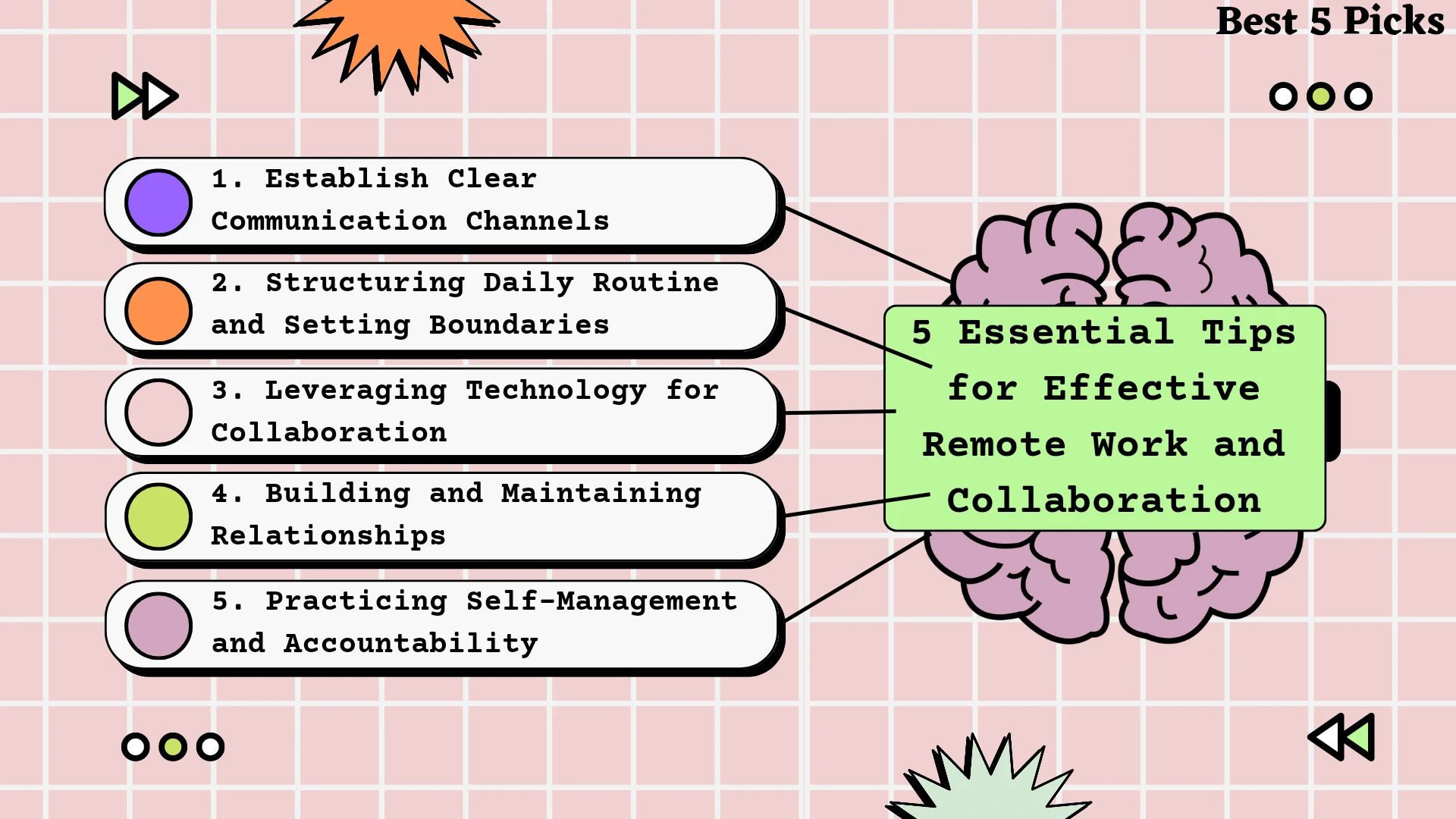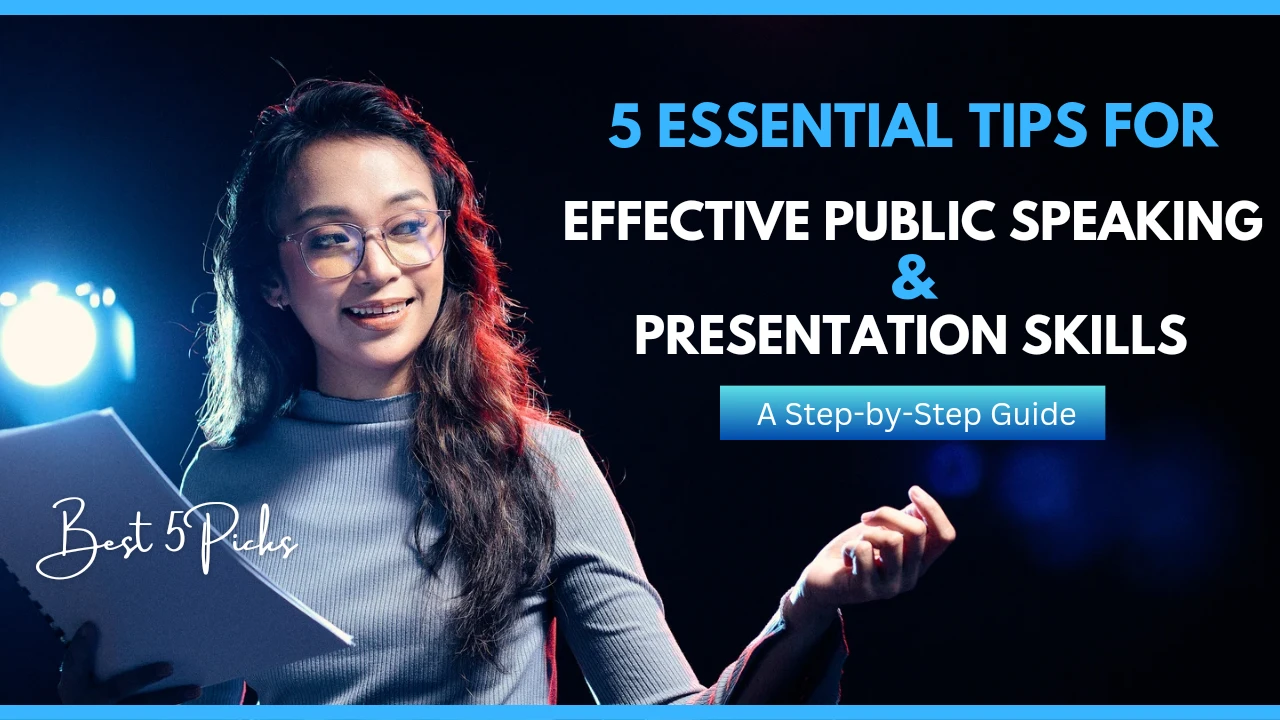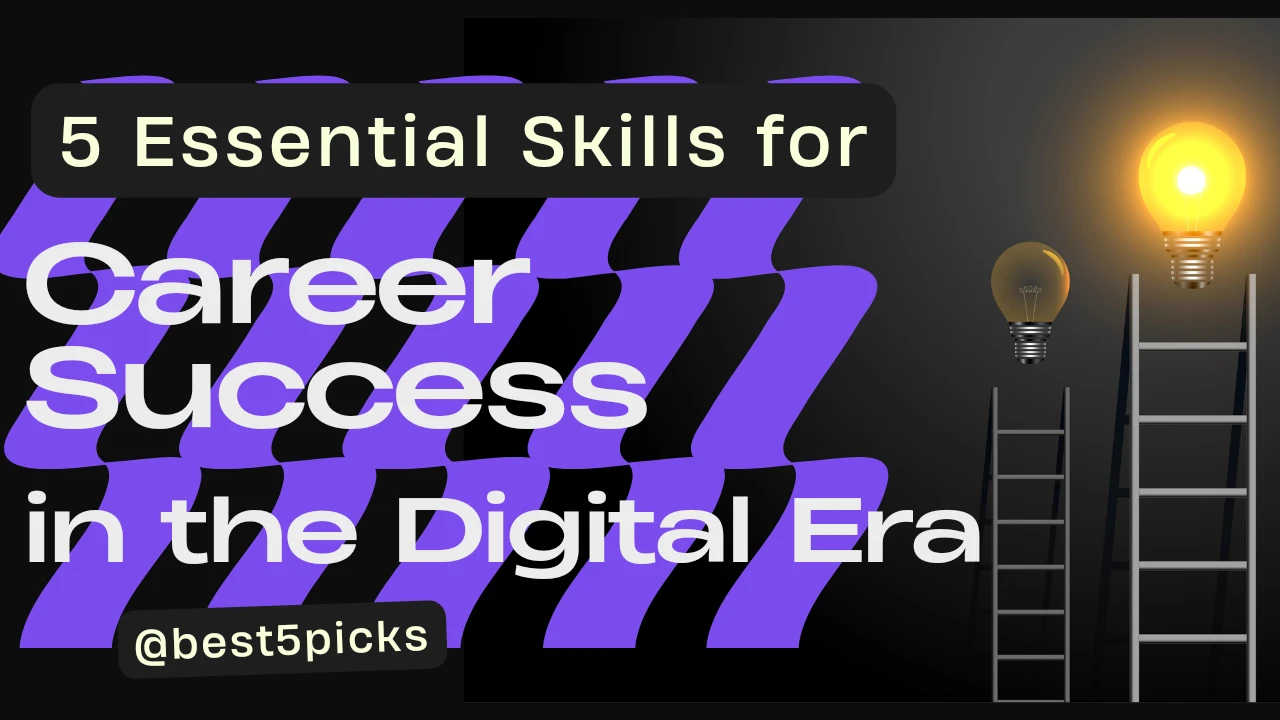In today’s fast-paced educational landscape, students are constantly seeking ways to enhance their learning and academic performance.
The Top 10 Most Effective Study Techniques for Students provide valuable strategies to optimize study habits, improve retention, and foster a deeper understanding of the material.
From leveraging the power of Active Recall to employing the Pomodoro Technique, these techniques cater to various learning styles and subject areas.
By incorporating these methods into their study routines, students can transform their approach to learning, making their study sessions more efficient and effective.
In this article, we will explore each technique in detail, highlighting their benefits and offering practical tips for implementation.
10. Self-Explanation: Reflect on Your Thought Process

Benefits:
- Enhances comprehension by encouraging students to think through their thought process.
- Improves problem-solving skills by requiring active engagement with the material.
- Encourages deeper understanding rather than surface-level memorization.
- Fosters long-term retention by solidifying knowledge.
- Helps identify and correct errors in understanding.
- Effective for subjects like mathematics, science, and logic where step-by-step reasoning is essential.
- Can be paired with other techniques, like the Feynman method or active recall, for even stronger results.
- Useful for study groups, where students explain concepts to each other to reinforce understanding.
Self-explanation involves talking through or writing out your thought process after completing a task, such as solving a problem or reading a chapter.
By reflecting on why certain steps were taken and how solutions were derived, students reinforce their understanding and identify areas of improvement.
This technique is particularly useful in subjects like math and physics, where solving problems requires not only memorizing formulas but understanding how to apply them.
After completing a problem, students can ask themselves, “Why did I choose this method?” or “How does this concept connect to what I learned earlier?” Self-explanation promotes metacognition, the process of thinking about one’s own thinking, which has been shown to significantly improve learning outcomes.
9. Dual Coding: Strengthen Learning by Combining Words and Visuals
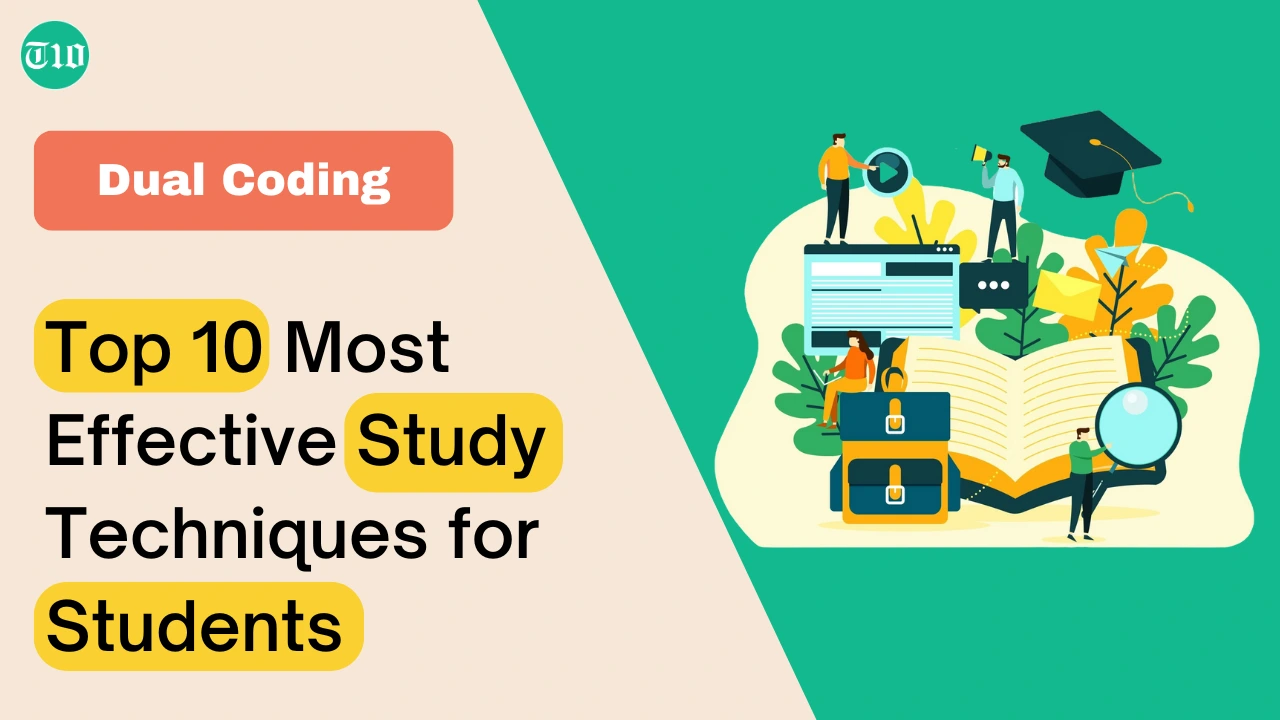
Benefits:
- Strengthens understanding by pairing verbal and visual information.
- Improves retention of abstract or complex concepts.
- Helps simplify information that might otherwise be hard to understand.
- Supports learners who are more visual in their approach to studying.
- Can be used for subjects like biology, geography, or chemistry where diagrams are common.
- Particularly effective for visual learners or students who struggle with text-heavy materials.
- Works well for summarizing lessons, concepts, or research findings.
- Can be used to review notes more effectively by turning them into visual representations.
Dual coding refers to the practice of learning by using both verbal and visual information simultaneously. The human brain processes verbal and visual inputs differently, so combining the two can enhance understanding and retention.
For example, pairing a diagram of the human circulatory system with an explanation of how blood flows through the body helps students grasp the concept better than using text alone.
Visual aids like graphs, charts, and infographics can simplify complex information and help students see patterns or relationships between ideas.
This technique is especially effective for subjects like biology, geography, and physics, where visual representations are often necessary to understand the material.
8. Elaborative Interrogation: Deepen Understanding by Asking ‘Why’

Benefits:
- Develops critical thinking and a deeper understanding of the subject.
- Encourages engagement with the material, making it easier to recall later.
- Helps connect new information with existing knowledge.
- Increases retention by forcing students to reason through the material.
- Especially effective for sciences and subjects where cause and effect relationships are key.
- Useful for essays, presentations, and exams where detailed understanding is required.
- Can be combined with peer discussions to further elaborate on concepts.
- Helps identify gaps in understanding quickly, ensuring a more thorough review of the material.
Elaborative interrogation is a method that encourages students to ask “why” and “how” questions about the material they are studying.
By probing deeper into the reasons behind facts, concepts, or processes, students engage more actively with the content and develop a deeper understanding.
For instance, instead of simply memorizing that photosynthesis produces glucose, a student might ask, “Why does photosynthesis produce glucose?” or “How does light energy contribute to this process?” This process of self-questioning strengthens connections between ideas and improves long-term memory.
Elaborative interrogation is especially helpful for subjects like science and history, where understanding the underlying causes and effects is crucial.
7. SQ3R Method: A Structured Approach to Reading
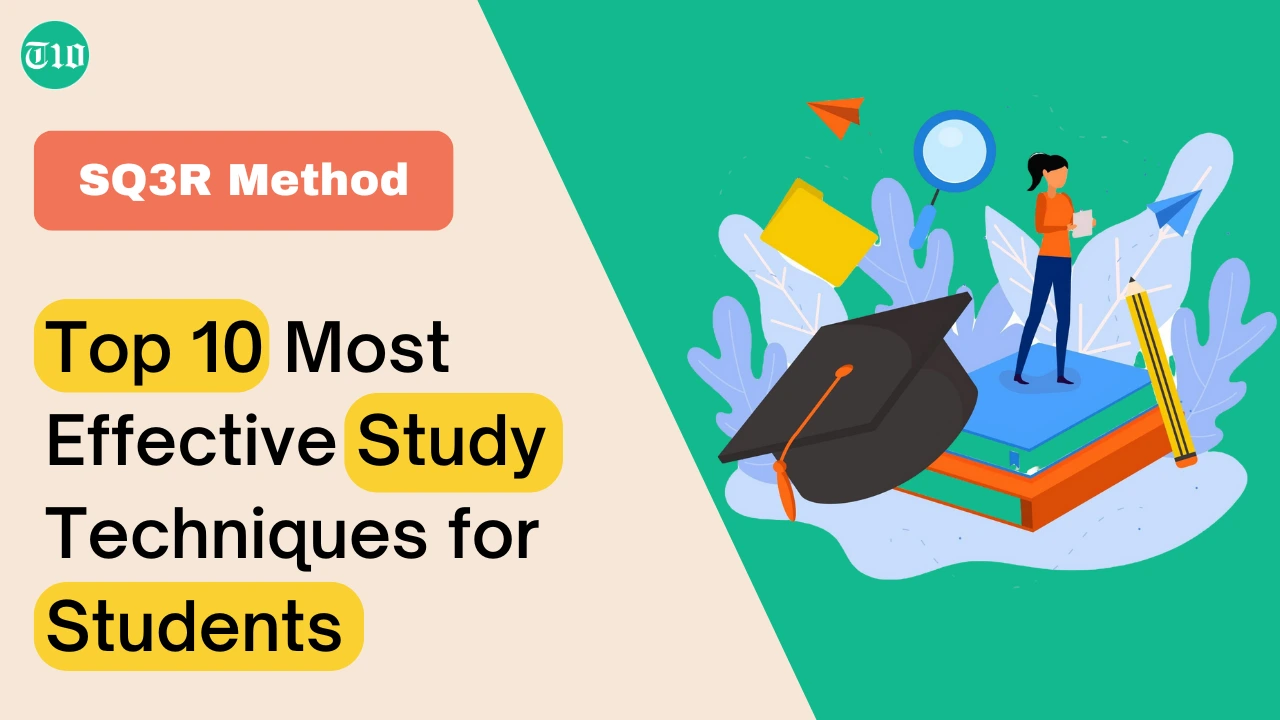
Benefits:
- Improves focus and engagement with reading materials.
- Promotes better organization of study sessions.
- Encourages active reading rather than passive scanning of material.
- Helps in retaining complex information over time.
- Ideal for subjects that involve extensive reading, such as social sciences, law, and literature.
- Can be adapted for textbooks, articles, or research papers.
- Reinforces understanding through reciting and reviewing, essential for long-term retention.
- Encourages curiosity by asking questions before reading.
SQ3R is a well-known reading comprehension technique designed to help students understand and retain information more effectively. It stands for Survey, Question, Read, Recite, and Review.
Students first survey the material by scanning headings, subheadings, and key points to get an overview. Then, they formulate questions about what they want to learn from the text. During the read phase, they actively search for answers to these questions.
After reading, students recite what they have learned to reinforce retention, and finally, they review the material to solidify their understanding.
This structured approach is particularly useful for subjects that involve a lot of reading, such as social sciences, history, or law, and helps students retain information better than passive reading.
6. Interleaving: Mix Subjects for Greater Mastery

Benefits:
- Improves the brain’s ability to differentiate between concepts.
- Enhances problem-solving skills by promoting flexibility in thinking.
- Helps avoid the monotony of studying one subject for extended periods.
- Encourages better mastery of multiple subjects simultaneously.
- Useful for learning subjects like math or science where varied problems are common.
- Prevents the feeling of boredom or burnout from prolonged focus on one topic.
- Works well when preparing for exams covering multiple subjects.
- Forces retrieval of information, improving overall learning efficiency.
Interleaving is a study method that involves alternating between different subjects or types of problems during a study session. Rather than focusing on a single topic for a long period, students switch between various topics or skills.
This method enhances learning because it forces the brain to continually retrieve different information, making it easier to differentiate between concepts and apply knowledge in different contexts.
For example, a student studying math might switch between algebra, geometry, and calculus problems instead of focusing on just one for an entire session.
Interleaving has been shown to improve both understanding and problem-solving skills, making it highly effective for subjects that involve varied concepts, like math, science, or languages.
5. Feynman Technique: Master Concepts by Teaching Them
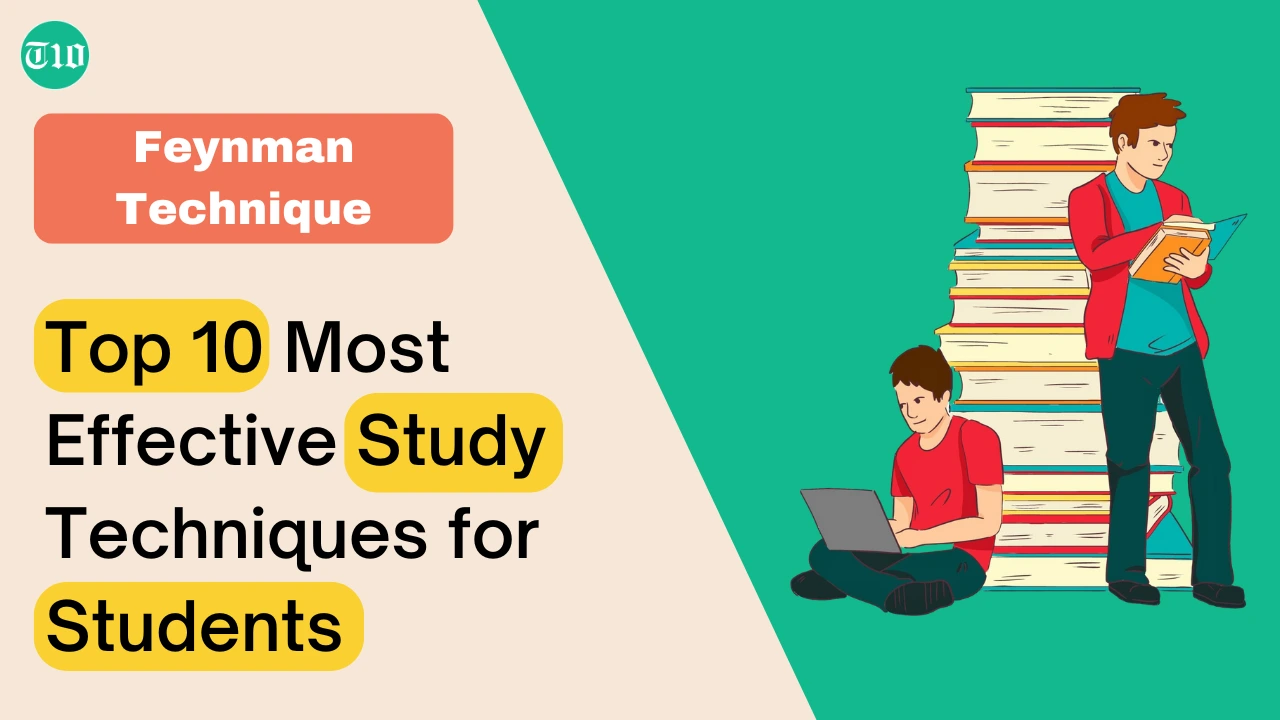
Benefits:
- Highlights weak areas in knowledge for targeted review.
- Improves ability to simplify complex concepts.
- Enhances critical thinking and comprehension.
- Encourages the use of analogies and metaphors for better understanding.
- Effective for mastering technical subjects like physics, math, and engineering.
- Can be used alone or in study groups to explain concepts to peers.
- Forces active engagement with the material, which improves retention.
- Works well in combination with self-explanation and active recall.
Named after the Nobel Prize-winning physicist Richard Feynman, this technique involves simplifying and explaining concepts as if you were teaching them to someone with no prior knowledge.
The act of simplifying forces students to confront any gaps or weaknesses in their understanding, encouraging a deeper grasp of the material. If they struggle to explain a concept clearly, it signals the need for further review.
This method works especially well for technical subjects like physics, chemistry, and mathematics, where understanding foundational principles is crucial.
The Feynman Technique not only reinforces what you already know but also develops your ability to communicate complex ideas clearly and concisely.
4. Mind Mapping: A Visual Approach to Learning
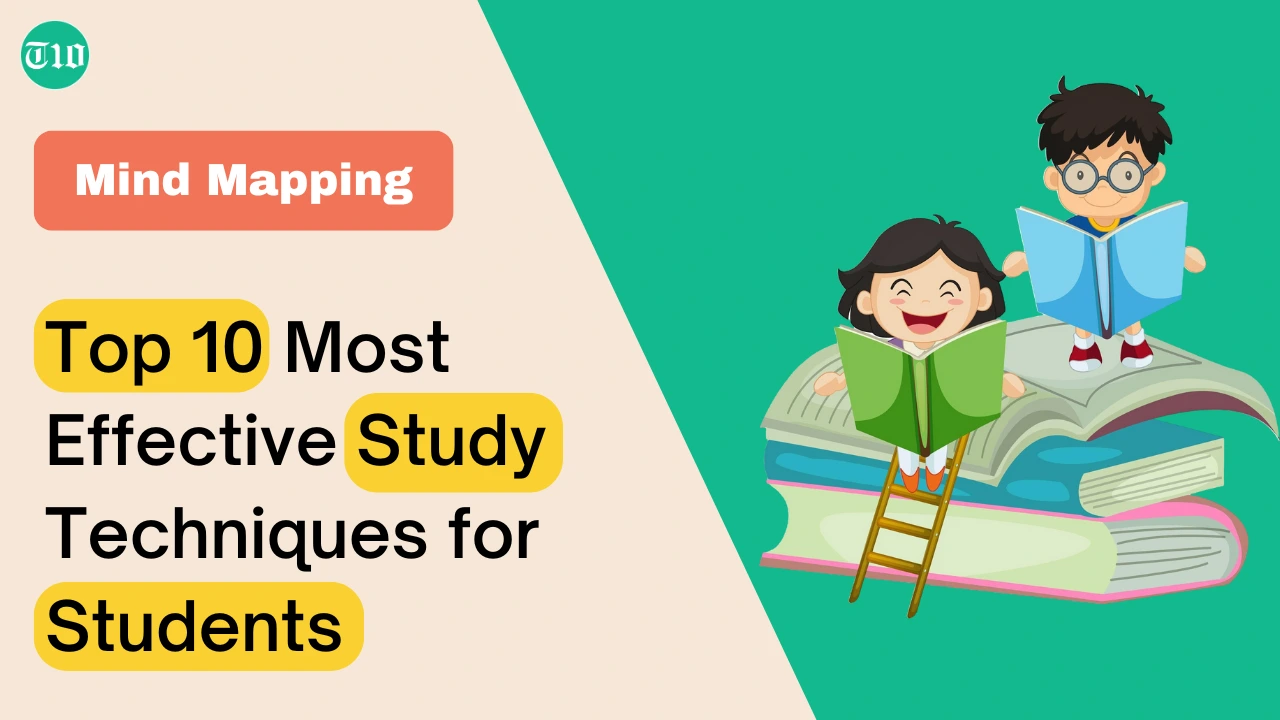
Benefits:
- Enhances comprehension by visualizing relationships between topics.
- Stimulates creative thinking and brainstorming.
- Breaks down large, complex information into easily digestible chunks.
- Useful for organizing essay ideas, preparing for presentations, and reviewing study materials.
- Encourages both analytical and creative thinking.
- Ideal for subjects like literature, history, or any topic with complex, interconnected ideas.
- Can be used as a brainstorming tool before writing essays or papers.
- Helps with memory retention by providing a visual representation of the material.
Mind mapping is a technique that visually organizes information in a way that mirrors the brain’s natural processes. It starts with a central idea, and related subtopics radiate outwards like branches of a tree, helping students see the connections between concepts.
This method is particularly useful for brainstorming, organizing complex ideas, or studying subjects like history or literature where there are many interconnected themes.
By breaking down information into a diagram, students can transform difficult or overwhelming material into a more manageable format.
Mind maps engage both hemispheres of the brain by combining analytical and creative thought processes, making learning more effective and enjoyable.
3. Pomodoro Technique: Balance Focus and Rest
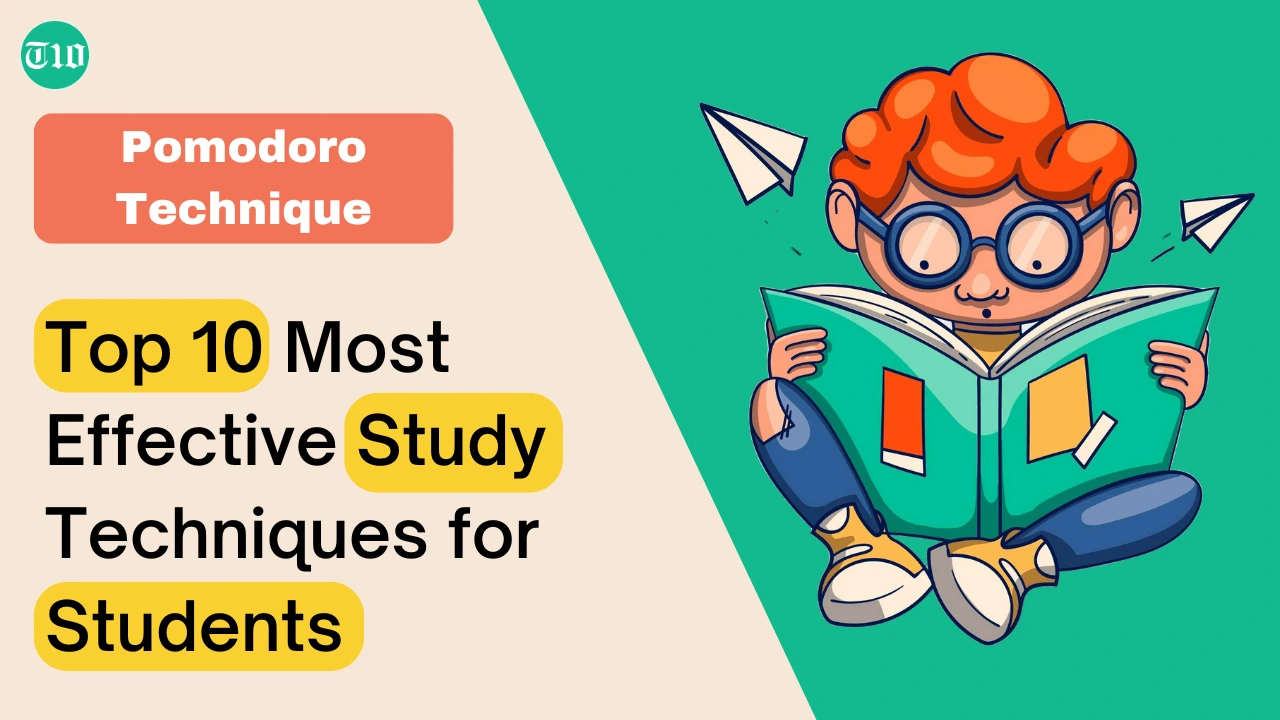
Benefits:
- Improves focus and productivity during study sessions.
- Prevents mental fatigue and burnout.
- Encourages disciplined study habits and balanced rest periods.
- Helps break larger tasks into manageable chunks, reducing overwhelm.
- Enhances motivation through short, frequent successes.
- Can be customized with different time intervals (e.g., 50 minutes of work, 10 minutes of rest).
- Best for subjects that require sustained focus, like coding or problem-solving.
- Suitable for students who struggle with time management or procrastination.
The Pomodoro Technique is a time management method that breaks study time into intervals of focused work followed by short breaks.
Typically, students work for 25 minutes (one “Pomodoro”) and then take a 5-minute rest. After four Pomodoros, they take a longer break of 15-30 minutes. This method is ideal for maintaining high levels of concentration while avoiding mental fatigue.
By scheduling study sessions this way, students can manage their energy levels better and sustain productivity over long periods.
The short breaks refresh the brain, improving focus and motivation during each work session. This technique is especially useful for subjects that require intense concentration, such as math, coding, or writing.
2. Spaced Repetition: Combat the Forgetting Curve

Benefits:
- Maximizes memory retention over long periods.
- Prevents last-minute cramming and promotes better time management.
- Encourages consistent review of material, reducing study stress.
- Adapts to individual learning curves by focusing on more challenging topics.
- Effective for subjects that require memorization like languages and sciences.
- Best used with flashcard apps like Anki or physical flashcards.
- Can be paired with other techniques like active recall for enhanced results.
- Particularly useful for cumulative subjects where old information is built upon over time.
Spaced repetition is based on the scientific principle that we forget information over time unless it is periodically revisited.
The technique involves reviewing learned material at systematically increasing intervals to fight the natural “forgetting curve” described by psychologist Hermann Ebbinghaus.
Instead of cramming information in a short time span, students spread out their study sessions over days, weeks, or months. This way, the brain gets the chance to reinforce the information, leading to long-term retention.
Tools like Anki or physical flashcards can help schedule these reviews. Spaced repetition works exceptionally well for language learning, medical studies, and subjects requiring the retention of large amounts of information.
1. Active Recall: The Key to Strengthening Memory
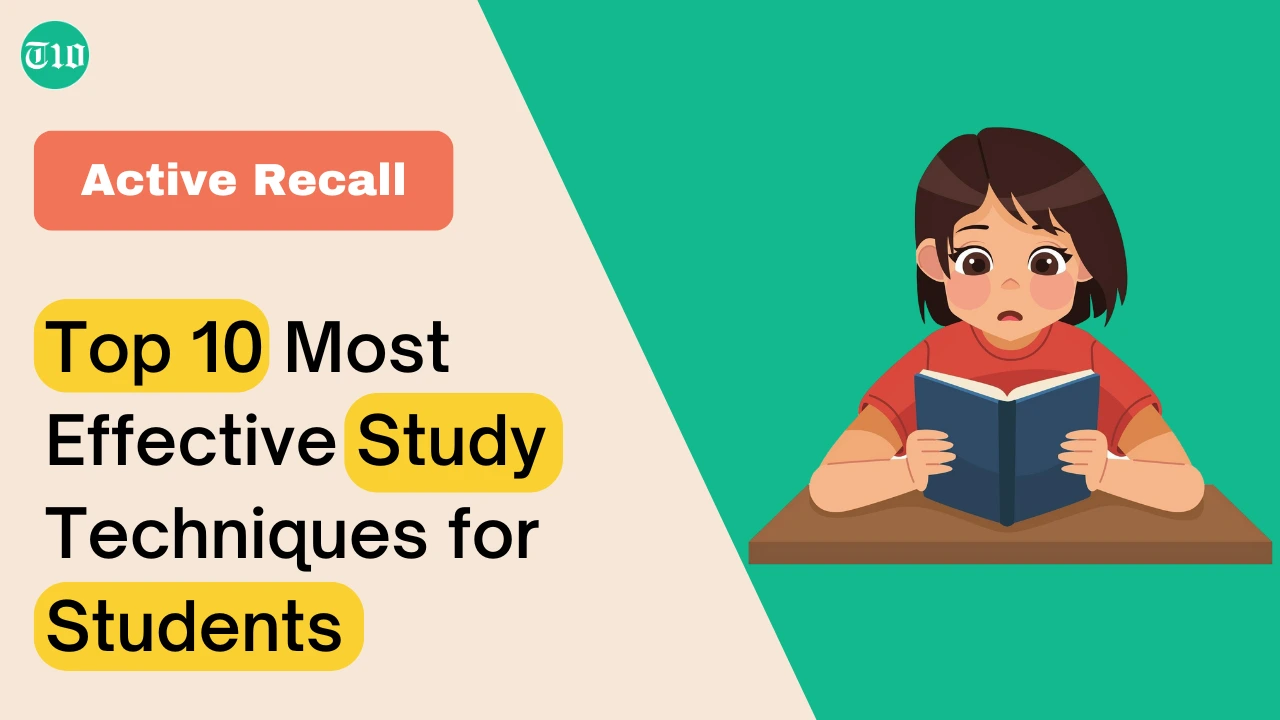
Benefits:
- Promotes deeper learning by engaging active brain processes.
- Reinforces long-term memory retention.
- Highly efficient for exam preparation and high-stakes tests.
- Helps identify gaps in knowledge quickly.
- Improves focus on key concepts instead of passive rereading.
- Works well with flashcards and quizzes.
- Ideal for subjects like history, biology, and vocabulary learning.
- Can be integrated into daily study routines for ongoing reinforcement.
Active recall is a powerful study method that goes beyond passive learning. Instead of just reviewing notes or re-reading a textbook, students engage in recalling information from memory.
This method is particularly effective because it forces the brain to retrieve learned concepts, which strengthens the neural connections related to that knowledge.
When you actively test yourself—whether through flashcards, quizzes, or simply writing down what you know—you create a stronger memory trace.
Research has shown that the act of recalling information is more effective for retention than repeated reading. It’s especially useful for subjects requiring memorization, like biology, history, or law, and can be used in preparation for exams.
Conclusion – Top 10 Most Effective Study Techniques for Students
Mastering effective study techniques is key to academic success. The Top 10 Study Techniques outlined here — from Active Recall and Spaced Repetition to methods like Pomodoro and Feynman Technique — offer a variety of strategies to cater to different learning styles and subject matters.
These methods enhance memory retention, focus, and understanding while promoting efficient study habits.
By implementing a combination of these approaches, students can tailor their study sessions to maximize productivity, reduce stress, and improve their academic performance.
Ultimately, the most effective study method is the one that suits your personal learning style and helps you grasp and retain knowledge efficiently.
List of Top 10 Most Effective Study Techniques for Students
Here is a table for the Top 10 Most Effective Study Techniques for Students including rank, study technique, short description and key benefits.
| Rank | Study Technique | Description | Key Benefits |
|---|---|---|---|
| 1 | Active Recall | Testing yourself on material without looking at resources to enhance memory retrieval. | Reinforces long-term memory, efficient for exam preparation, promotes deeper learning. |
| 2 | Spaced Repetition | Reviewing information at increasing intervals to enhance retention. | Improves long-term retention, reduces cramming, maximizes study time. |
| 3 | Pomodoro Technique | Breaks study sessions into 25-minute intervals with short breaks to boost focus and prevent burnout. | Enhances focus and productivity, prevents mental fatigue, ensures balanced work-rest cycles. |
| 4 | Mind Mapping | A visual representation that organizes ideas by connecting main concepts to subtopics. | Encourages creative thinking, simplifies complex topics, visualizes relationships between ideas. |
| 5 | Feynman Technique | Explaining a concept in simple terms to identify gaps in knowledge and strengthen understanding. | Deepens comprehension, helps identify weak areas, reinforces knowledge. |
| 6 | Interleaving | Switching between different subjects or topics during study sessions. | Enhances cognitive flexibility, supports mastery of multiple subjects, prevents monotony. |
| 7 | SQ3R Method | Structured reading technique involving Survey, Question, Read, Recite, and Review. | Improves reading comprehension, organizes learning, enhances retention through review. |
| 8 | Elaborative Interrogation | Asking ‘why’ and ‘how’ questions about material to deepen understanding. | Promotes critical thinking, deepens understanding, fosters long-term retention. |
| 9 | Dual Coding | Combining words with visuals to reinforce understanding and memory. | Strengthens memory, improves understanding of abstract concepts, supports learning through multiple formats. |
| 10 | Self-Explanation | Reflecting on what is being learned by explaining it to oneself after completing a task or reading. | Improves problem-solving skills, encourages deeper understanding, supports long-term memory retention. |
This table summarizes the top 10 study techniques along with their descriptions and key benefits.
FAQs Top 10 Most Effective Study Techniques for Students
How can I focus 100% on studying?
Create a distraction-free environment, use the Pomodoro technique, set clear goals, and take regular breaks.
How can I study 10x faster?
Utilize active recall, spaced repetition, and focus on understanding concepts rather than memorizing.
Can you focus for 2 hours straight?
Yes, with techniques like the Pomodoro method (short focused sessions) or by gradually building focus stamina.
How can I study super fast?
Focus on key concepts, use mind maps, and apply active recall for efficient learning.
How to train your brain for studying?
Practice consistently, challenge yourself with different study techniques, and maintain a balanced lifestyle (sleep, diet, exercise).
Which is the most effective study technique?
Active recall combined with spaced repetition is considered highly effective.
What is the 2357 study method?
A method that focuses on studying for specific time intervals (e.g., 2, 3, 5, 7 minutes) to maximize focus.
What is the most effective study method?
Methods like active recall, spaced repetition, and the Feynman technique are widely regarded as the most effective.
How to study smart, not hard?
Prioritize understanding, use efficient techniques (e.g., active recall), and focus on key material instead of overloading yourself.
Which method is good for studying?
Spaced repetition and active recall are great methods for enhancing long-term retention.
What is the 7 3-2-1 study method?
A technique that focuses on segmenting study time into a 7-day review cycle, 3 days of intense focus, 2 light study days, and 1 rest day.
What is the 5 4 3-2-1 learning strategy?
A step-by-step method for reviewing and understanding material, starting with 5 key points, then 4 supporting details, and so on.
What is the 3-2-1 rule of studying?
Review 3 times, write down 2 key points, and summarize in 1 sentence to reinforce learning.
What is the 120 20 study technique?
Study for 120 minutes with focused effort, then take a 20-minute break to recharge.
What is the 2/3, 5/7 study method?
This method breaks study sessions into time blocks based on 2/3 or 5/7 proportions for better pacing.
How to study smart, not hard?
Focus on high-impact areas, use spaced repetition, and leverage active recall for deeper learning.
How to study with ADHD?
Break tasks into small chunks, use visual aids, minimize distractions, and incorporate movement during breaks.
How to study fast without forgetting?
Use active recall, spaced repetition, and practice summarizing the material in your own words.
What is the WOW method of studying?
A personalized technique focusing on creating “wow” moments by deeply understanding and relating to the material.
What is the best way to study and memorize?
Combining active recall, visualization, and spaced repetition leads to the best results for memory retention.
Quick Recap of Top 10 Most Effective Study Techniques for Students
- Active Recall
- Spaced Repetition
- Pomodoro Technique
- Mind Mapping
- Feynman Technique
- Interleaving
- SQ3R Method
- Elaborative Interrogation
- Dual Coding
- Self-Explanation
In conclusion, these Top 10 Most Effective Study Techniques for Students provide a diverse toolkit to improve focus, retention, and comprehension.
By experimenting with different techniques, students can find the methods that best suit their learning styles, maximizing success in their studies.

